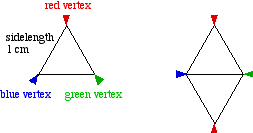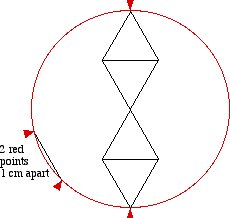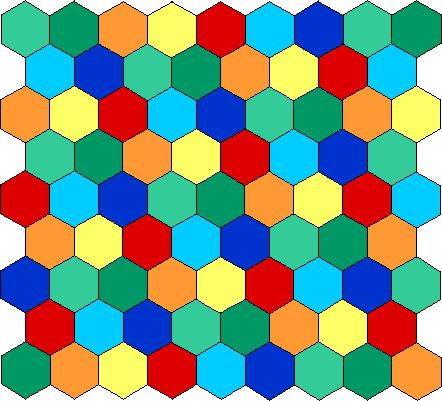Three Colours and Seven Colours
Painting the Plane with Three Colours
Here is a proof that there is no way of painting the plane with 3 colours so that there are no two points the same colour exactly 1cm apart.
The proof is "by contradiction" - that is, we suppose the opposite, and then find a contradiction.
So, suppose we are able to paint the plane with red, green and blue, say, so that there are no two points of the same colour exactly 1cm apart. Then for any equilateral triangle of sidelength 1cm, all three vertices must be painted different colours, and if we make a rhombus out of two such triangles, the vertices at opposite ends of the long diagonal must be painted the same colour as each other - red, say.

Now imagine rotating that rhombus about one of its red vertices. The opposite vertex traces a circle, every point of which is red. But on this circle there are pairs of points exactly one unit apart, which is a contradiction.

Painting the Plane with Seven Colours
The picture below shows part of a colouring of the plane using 7 colours, such that no two points 1 cm apart are coloured the same colour.
The diameter of each hexagon (the greatest distance between any two of its points) is 9mm. The boundaries of the hexagons have been drawn in black, however, this is just for clarity. The three left edges of each hexagon, except for the two endpoints (that is, the top and bottom vertices) are actually coloured the same colour as the interior of the hexagon.
